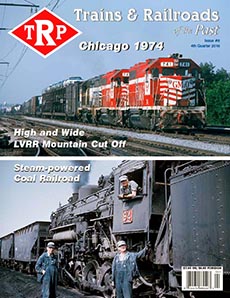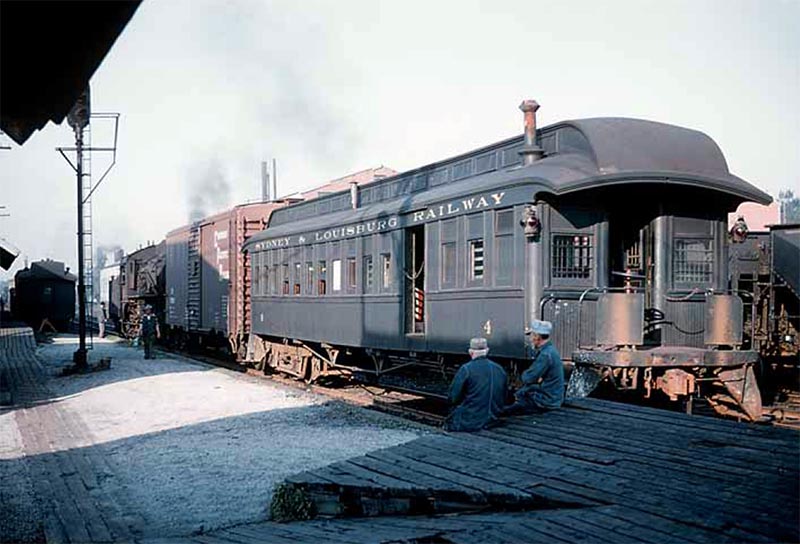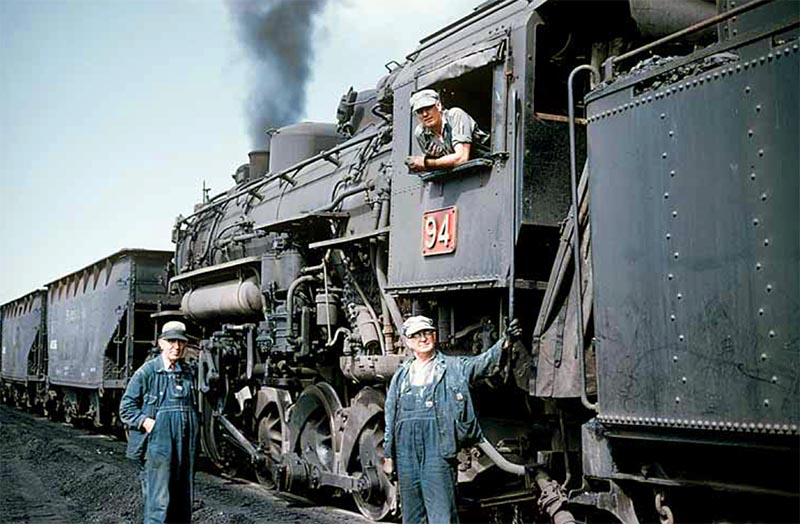 By Bill Robie/Photos by the author
By Bill Robie/Photos by the author
An article in the April 1960 Railroad Magazine sure caught my attention and prompted youthful thoughts of a possible adventure. Titled “100% Steam,” the article stated that thirty-one steam locomotives were still very busy on the 39-mile Sydney & Louisburg Railway hauling coal at the northeast end of Nova Scotia in Canada. I was 16 years old and lived in Reading, Mass., at the end of a 12-mile commuter run north of Boston where steam had been replaced by EMD GP7s and Budd rail diesel cars just a few years before. The fact that my parents let me go alone on this 1,600 mile round-trip journey amazes me to this day. I saved money from my afternoon paper route and purchased the round-trip strip-tickets from the Reading depot agent for a grand total of $71.08.
I left from the Winchester station on a Boston & Maine two-car Budd train at 5:52 p.m. on Sunday, June 26, 1960, and arrived at Sydney, Nova Scotia, at 9:50 p.m. the next day, an impossible trip to make by rail today. I carried a knapsack with basic necessities for a three-week stay — a sleeping bag, and my brand new Kodak Retina IIc camera. I slept that first night in a city park and hitchhiked the next morning to Glace Bay, 16 miles away and headquarters for the Sydney & Louisburg Railway Company. The letter I received before I left from Mr. Alex McDonald, Superintendent, wasn’t too encouraging. “After signing a form… it will be permissible for you to take pictures. I regret very much that it is not permissible for you to ride on our trains, other than our mixed train which leaves Glace Bay.”

The two-car Louisburg mixed train is quietly waiting at the Glace Bay, N.S., station for orders and the scheduled departure time of 7:45 a.m. behind 2-8-2 No. 70.
I found the railway’s general office on the second floor of a two-story, wood-shingled building next to the tracks and checked in with a friendly manager named Cletus Egan. The train dispatcher’s office was in the room next door and since the depot downstairs wasn’t used much any more I was told I could sleep at night on the floor in the ladies restroom. I then made my first visit to the incredibly compact and congested roundhouse and engine servicing yard a short distance down the tracks, following which Mr. Egan took me to his home for lunch. This was a great start! I went back to the roundhouse that afternoon and tried to absorb everything. Glace Bay was the railroad headquarters and I was in “railfan paradise.” Nearly all train movements originated from Glace Bay and most of the locomotives were based there as well. The nearly full-circle roundhouse, composed of mismatched additions, held a number of active and inactive locomotives, as well as a few in for repairs. Two of the larger steamers were stored in a two-stall shed close by. In the evening, five or six additional locomotives were crammed onto the two roundhouse lead tracks, necessitating all kinds of jostling to position each engine for sand, coal, water, and ash pit servicing. Any additional locomotives were stored for the night on a sidetrack just before the engine yard entrance. The sights, sounds, and smells were everything I had come for.
The next morning I purchased a ticket and boarded the daily (except Saturday and Sunday) mixed train for the 24-mile, half day, roundtrip to the south end of the line at Louisburg. We left with one Canadian Pacific steel boxcar and a beautiful wood combination car with truss-rods and clerestory roof. No. 70, a 2-8-2 built by Montreal in 1925, was at the head end, tender first, with Murdoch McDonald at the throttle. Outside town, at Caledonia, we picked up a string of empty hoppers, left them at Broughton Jct. on a spur that served an off-line coal mine, and then continued on to Louisburg. After a routine stop, primarily to move No. 70 to the other end of the short train (engine now facing forward), we headed back to Glace Bay, picking up loaded hoppers waiting for us at the Broughton Jct. spur. I was overjoyed to make the entire return trip in the cab and hoped that similar opportunities would arise again, despite the “official policy.”

No. 90, an 0-8-0 built by Lima in 1937 and acquired by the Sydney and Louisburg from the Pittsburgh & Lake Erie, drifts past the railroad’s general offices in Glace Bay traveling light with just the “buggie” en-route to the Hub, one mile up the tracks, to begin collecting loaded hoppers for the trip to Sydney. Photo was taken from a second story window in the dispatcher’s office.
The main purpose of the Sydney & Louisburg was to haul coal from the various mines, or collieries, (almost all located between Glace Bay and Sydney) to the “International Pier” at Sydney harbor 15 miles away for loading onto ships. A seven-mile subdivision branched from the main line at Victoria Jct. and served the mines in the Waterford area. Trains were typically 35 to 45 loaded hopper cars in the “westward” direction and 40 to 50 empty cars on the “eastward” return trip to the mines and back to Glace Bay. This part of the railroad was heavily traveled and the track not well maintained. Clinker ballast and non-staggered joints along most of the route made for some pretty rough rides, even at the rulebook maximum speed of 25 m.p.h.
As many as 20 to 30 train movements were active in a day along various segments of the line; all dispatched from Glace Bay by train orders, coordinated by telegraph, and logged by hand onto the dispatcher’s daily Register of Trains. An engine terminal and servicing yard, located near the Sydney Pier, housed four or five locomotives kept at that end mostly for switching activities. The mixed train to Louisburg was the only movement from Glace Bay in the opposite direction and no passenger service was provided between Glace Bay and Sydney.


